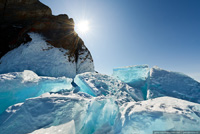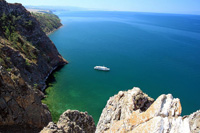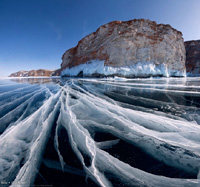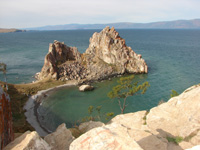Rector's Address
Why ISU?
Study at ISU is an opportunity to realize one’s dream and see the unique natural complex – lake Baikal.
The deepest and cleanest lake in the world is lake Baikal, a unique creation in nature located pratically in the centre of Asia, located 66 km from Irkutsk. Baikal is 455 metres above sea level, is 636 km in length with a width at its widest point at 79.5 km while at it's narrowest just 25 km, encompassing a surface area equal in size to Belgium. There are 26 islands on the lake, the largest of which is Olkhon with a length of 70 km and a maximum width of 20 km. The lake freezes over in January with the ice beginning to break up in May. The maximum depth of the lake is 1637 metres.
Lake Baikal was formed approximately 30 million years ago and is one of the oldest lakes on the planet. The lake does not show any signs of aging, but suggests that it will one day become an ocean as its banks are still growing apart at a rate of 2 cm per year. 20% of the world's supply of surface freshwater is concentrated in lake Baikal and is standard for clean drinking water.
The hollow of the lake could hold the entire Baltic Sea or the combined water of all five of the Great Lakes in North America. There are 336 rivers and streams that flow into the lake, but only one that flows from it, the Angara, which by legend is considered the daughter of Baikal.
The water of Baikal is renowned for its extraordinary purity and clarity. In the spring, after the ice has melted from the lake, a silver coin thrown into the lake at a depth of 30-40 meters is still visible. The chemical components of the water make it very similar to that of distilled water. The lake remains so clean due to the feeding of its waters from glaciers and rivers that filter and clean the water before its entering the lake, and due to a unique crustaceous zooplankton, the Baikal epischura, otherwise known as the sea flea. Baikal is a surprising, natural laboratory and extraordinary place on this planet. There are more than 1550 species of animals and approximately 1080 species of plants. More than 2/3 of these species are endemic to the lake. Because of its unique properties, the lake was added to the list of World Heritage Sites UNESCO in 1996.



















